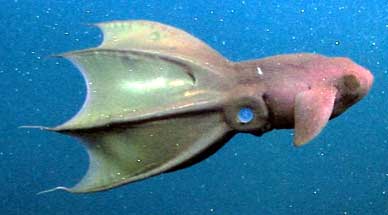Way, way back in his career Piers Anthony was still capable of writing mildy interesting books, before he discovered just writing the same story –of adventures in a magical fairyland in which every male character is like their creator obsessed by the colour of panties– over and over again would make him much more money. Back then he wrote the only novel of his I’ve read all the way through and not regretted it afterwards, Omnivore. It had the interesting idea of having an alien planet full of fungi based lifeforms, including huge fungilike “plants”. Turns out that idea is not as crazy as it sounds at first, because it turns out a prehistoric plant species called Prototaxites was really a fungus capable of growing twenty feet high:
The enigma known as Prototaxites, which stood in branchless, tree-like trunks up to more than 20 feet tall and a yard wide, lived worldwide from roughly 420 million to 350 million years ago. The giant was the largest-known organism of its day, living in a time when wingless insects, millipedes, worms and other creepy-crawlies dominated, as backboned animals had not yet evolved out of the oceans.
“That world was a very strange place,” said researcher C. Kevin Boyce, a University of Chicago paleobotanist.
Prototaxites has generated controversy for more than a century. Originally classified as a conifer like a pine tree, scientists later argued that it was instead a lichen, various types of algae or a fungus .
“No matter what argument you put forth, people say, well, that’s crazy. That doesn’t make any sense,” Boyce said. “A 20-foot-tall fungus doesn’t make any sense. Neither does a 20-foot-tall algae make any sense, but here’s the fossil.”
Every day you can learn a little tidbit like that that makes you realise the world you live in isn’t just sttranger and more wonderful than you imagined, but it’s stranger and more wonderful than you can imagine. But not if you read any Piers Anthony novels.

